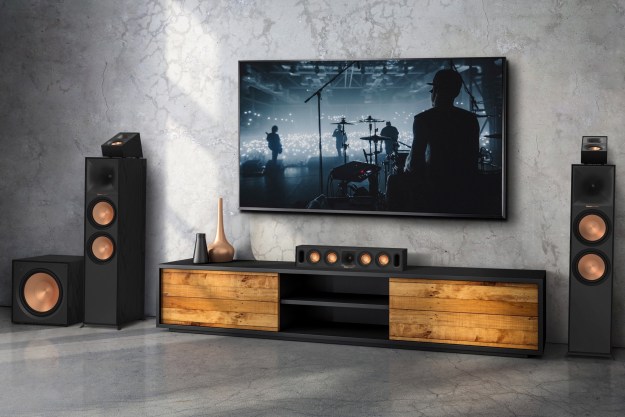Panasonic has announced a new speaker designed specifically to enhance the gameplay experience, called the SoundSlayer Gaming Speaker.
The new, 2.1-channel speaker comes with a slew of gamer-centric features, as well as a $300 price tag. With the SoundSlayer set to be available in September 2020, here’s what we know about the latest speaker from Panasonic.
Design

Before diving into its design, the SoundSlayer seems destined for the designation of “soundbar.” However, Panasonic exclusively called the SoundSlayer a gaming “speaker” in its press materials, so we’ll call it a speaker in this story, though we acknowledge it resembles a soundbar.
The speaker is 17 inches long and just over two inches wide, making it relatively compact as far as speakers and soundbars in this price range are concerned. It weighs a feather-like four pounds and comes with a solid variety of connections that include one HDMI input and a corresponding output, an optical digital audio input, and a USB port that’s meant strictly for software updates.
There are three drivers in total in the SoundSlayer. Starting with the front drivers, there are a pair of two-way speakers comprised of full-range drivers and tweeters to handle mid and high frequencies, respectively. Then, the speaker has a built-in subwoofer to help the SoundSlayer produce the low-end in gaming audio.
Features
Panasonic says the SoundSlayer is 4K HDR compatible, with a pass-through feature that allows users to enjoy 4K-compatible games, streaming content, and UHD Blu-rays. The company’s press release claims there won’t be any loss in image quality when a video signal passes through the gaming speaker from the initial source, whether it be a gaming console or Blu-ray player, and on to a 4K-compatible TV.
The SoundSlayer does not have Wi-Fi built in, which for a speaker at this price seems like something of an oversight. It does, however, have Bluetooth technology to connect smartphones and other mobile devices and listen to music and podcasts. Wi-Fi may be a better option for streaming, but at least this speaker has Bluetooth to help fill the gap.
Audio Quality
Panasonic says the SoundSlayer is optimized for games like Final Fantasy XIV Online and is equipped with three specific sound modes developed with help from the Final Fantasy XIV Online sound team. From this collaboration, the SoundSlayer features Role-Playing Game mode, First-Person Shooter mode, and Voice mode.
It goes without saying, but each of these modes is designed for specific gaming scenarios. In Role-Playing mode, Panasonic says the SoundSlayer “creates a sense of reality and intensity” for role-playing games. With First-Person Shooter mode, the speaker is supposed to provide accurate audio location to pick up subtle sounds like footsteps. And with Voice mode, the speaker is meant to enhance human voices and “further contribute to the immersive experience.”
The SoundSlayer also supports audio formats like Dolby Atmos, DTS:X, and DTS Virtual:X, and sports 3D stereophonic technology that Panasonic says adds “expressive power in the height direction to the conventional front, rear, right, and left surround sound.” So, while the speaker is technically physically limited with just three drivers, Panasonic says the SoundSlayer can virtually fill that gap by placing critical sound effects within the soundscape.
From its spec sheet and list of features, the SoundSlayer certainly sounds like it has the makings of a capable gaming speaker. But as is the typical case with new audio products, we can’t say for sure exactly how this speaker will perform until we’ve tested it ourselves. That said, we’re intrigued to see how this speaker stacks up to similarly priced products like the Yamaha YAS-209.
Editors' Recommendations
- Bose has a bigger Bluetooth speaker to power your next pool party
- Q Acoustics’ new 5050 floorstanding speakers are built to fill big rooms with sound
- Soundcore’s new Motion speakers are tough little portables with hi-res sound
- Marshall’s latest Bluetooth speaker has four drivers for 360 sound
- LG Display’s ‘invisible’ speaker brings sound to any surface in your car



